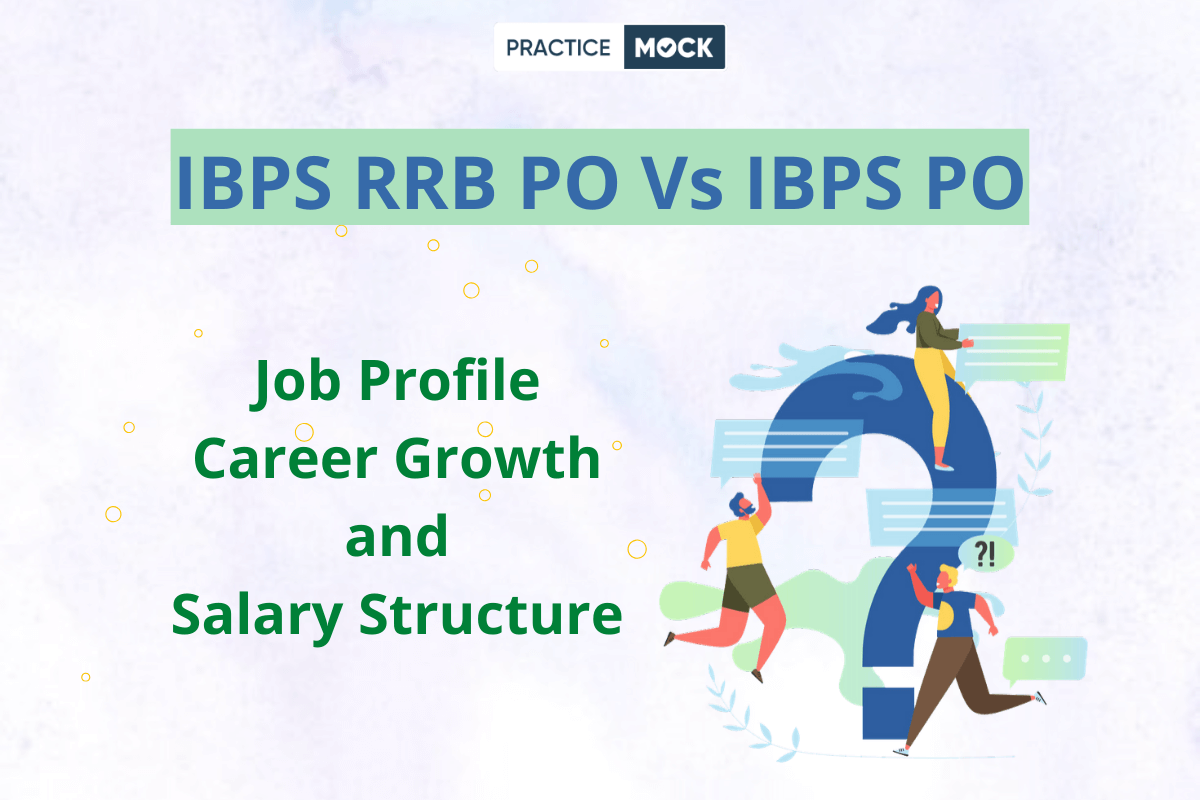Choosing a particular career can be a tough task. It can be even more difficult if we do not have enough information about the same. Hence, with this in mind, we decided to post an article wherein we shall be discussing the differences between IBPS RRB OS 1 and IBPS PO. We will ensure that by the time you finish reading the article, you have a good understanding of the two jobs. In this article, we shall touch upon various parameters, such as eligibility criteria, selection process, job role, career prospect and, salary structure. Having a fair understanding of the two jobs profiles will help you to weigh the pros and cons of it so that you can make an informed decision on whether you should go for RRB Officer Scale I or IBPS PO.
Salary and Perks
RRB PO
- Salary: Starting basic pay is approximately ₹36,000–₹42,000 per month (varies by RRB). After allowances (e.g., HRA, DA, and rural allowances), the in-hand salary ranges from ₹50,000–₹60,000.
- Perks:
- Rural-specific allowances (e.g., travel or accommodation support in remote areas).
- Job stability with fewer transfers compared to PSBs.
- Pension, medical benefits, and leave policies.
- Drawbacks: Lower HRA in rural areas and limited access to urban lifestyle benefits.
IBPS PO
- Salary: Starting basic pay is around ₹36,000–₹42,000 per month, similar to RRB PO. However, the in-hand salary after allowances (HRA, DA, etc.) ranges from ₹52,000–₹65,000, often higher due to urban postings.
- Perks:
- Higher HRA for metro/urban postings.
- Access to advanced training programs and certifications.
- Opportunities for foreign postings in banks with international operations.
- Comprehensive benefits like medical insurance, loans at concessional rates, and pensions.
- Drawbacks: Frequent transfers, including to rural branches, can disrupt work-life balance.
Career Growth and Promotion Prospects
RRB PO
- Promotion Path:
- Officer Scale I → Officer Scale II → Officer Scale III → Assistant Manager → Branch Manager → Regional Manager.
- Promotions are relatively faster in RRBs due to smaller organizational structures and fewer employees.
- Advantages:
- Less competition for promotions compared to PSBs.
- Opportunities to take on leadership roles early due to smaller branch sizes.
- Limitations:
- Limited exposure to diverse banking operations (e.g., corporate or international banking).
- Growth is mostly confined to rural banking, with fewer opportunities for specialization.
- Transfers are less frequent but may still occur within rural regions.
IBPS PO
- Promotion Path:
- Probationary Officer → Assistant Manager → Deputy Manager → Manager → Senior Manager → Chief Manager → Assistant General Manager → General Manager.
- Promotions are merit-based and depend on performance, seniority, and clearing internal exams.
- Advantages:
- Exposure to diverse banking functions, including retail, corporate, treasury, and digital banking.
- Opportunities for specialization in areas like risk management, forex, or credit analysis.
- Potential for high-profile roles, including foreign postings or leadership positions in head offices.
- Limitations:
- Higher competition due to a larger employee base.
- Promotions may take longer in larger banks with more hierarchical levels.
- Frequent transfers, including rural postings, can be challenging.
- Sign Up on Practicemock for Updated Current Affairs, Free Topic Tests and Free Mini Mocks
- Sign Up Here to Download Free Study Material
Free Mock Tests for the Upcoming Exams
- IBPS PO Free Mock Test
- RBI Grade B Free Mock Test
- IBPS SO Free Mock Test
- NABARD Grade A Free Mock Test
- SSC CGL Free Mock Test
- IBPS Clerk Free Mock Test
- IBPS RRB PO Free Mock Test
- IBPS RRB Clerk Free Mock Test
- RRB NTPC Free Mock Test
- SSC MTS Free Mock Test
- SSC Strenographer Free Mock Test
- GATE Mechanical Free Mock Test
- GATE Civil Free Mock Test
- RRB ALP Free Mock Test
- SSC CPO Free Mock Test
- AFCAT Free Mock Test
- SEBI Grade A Free Mock Test
- IFSCA Grade A Free Mock Test
- RRB JE Free Mock Test
- Free Banking Live Test
- Free SSC Live Test



